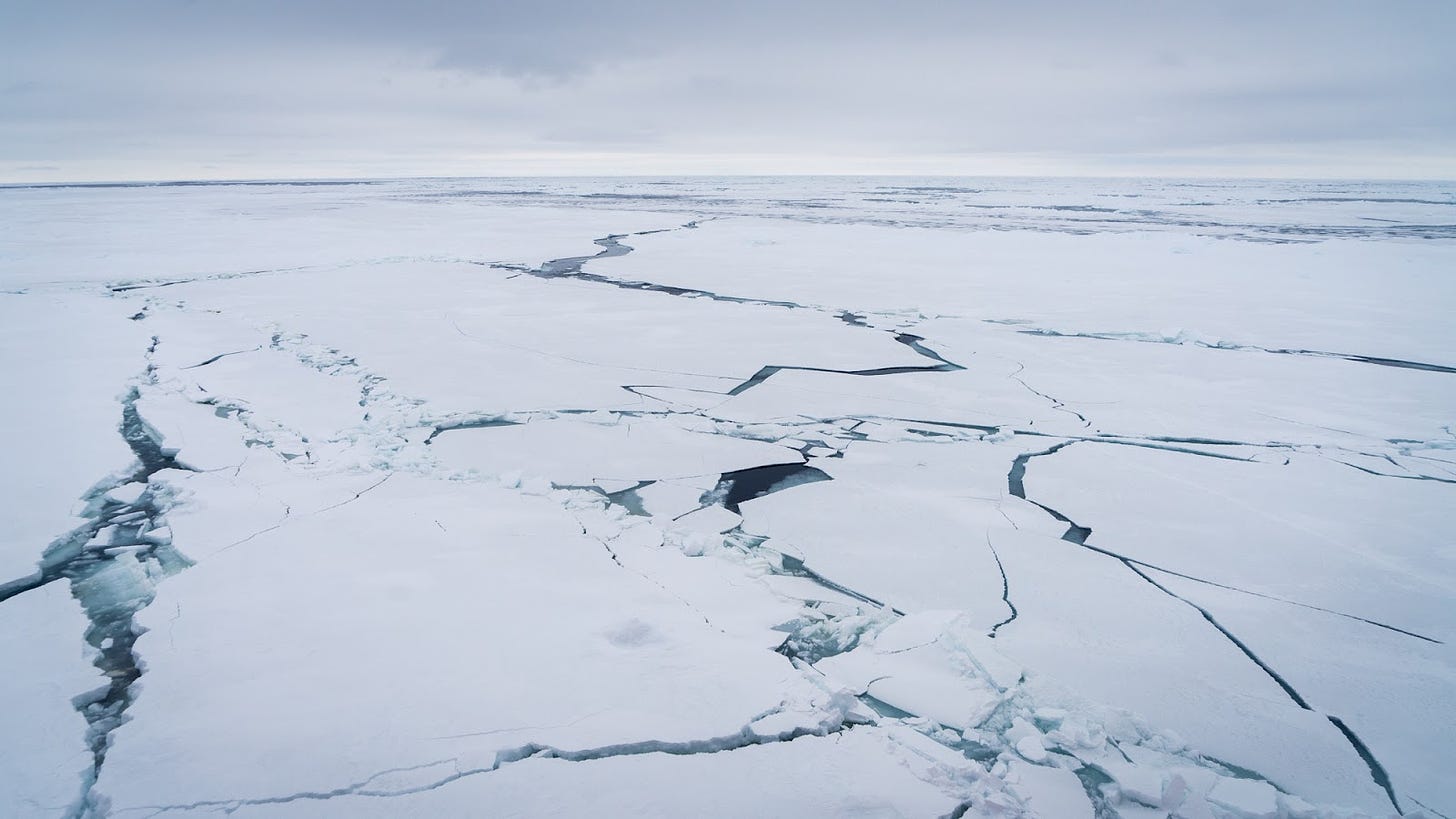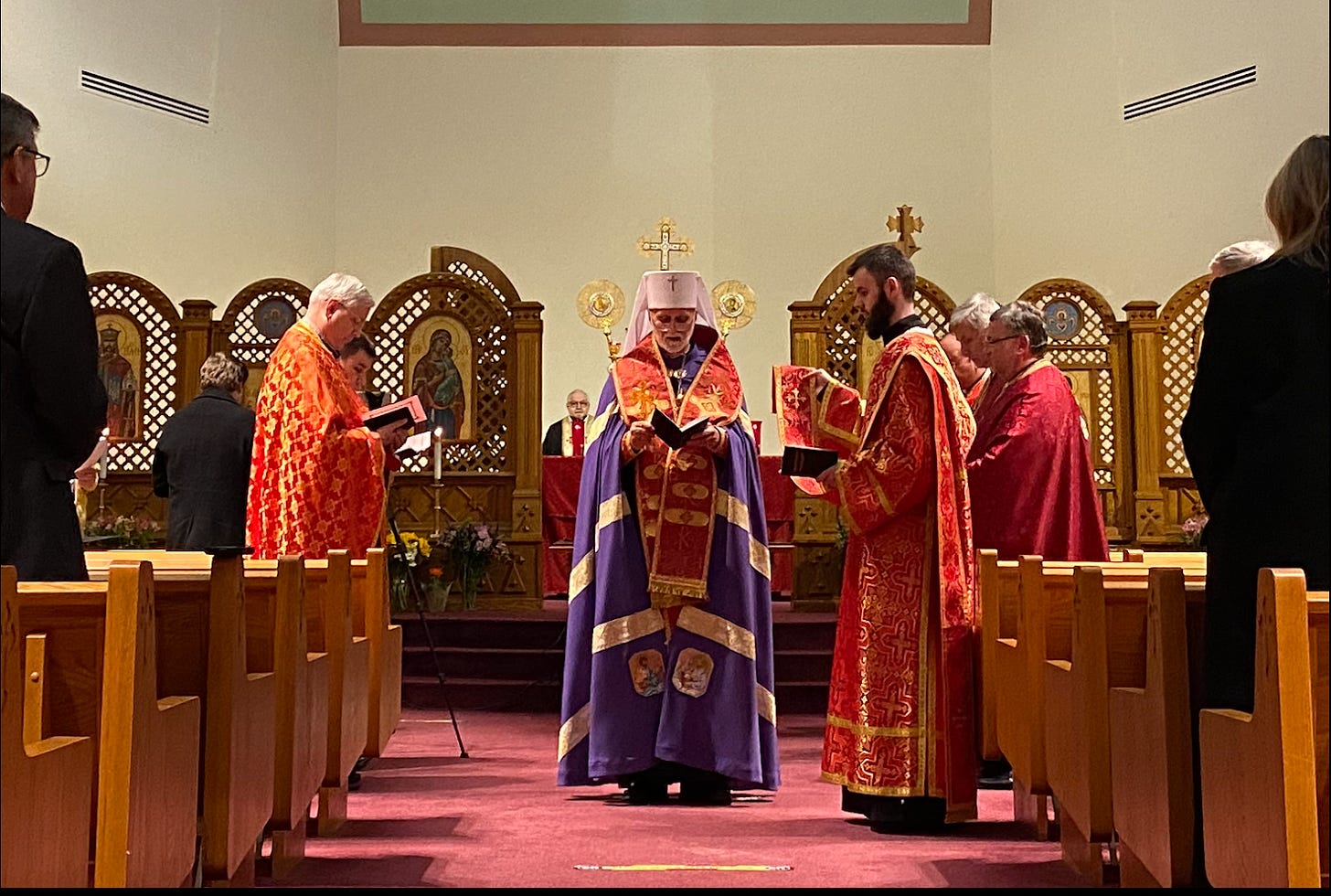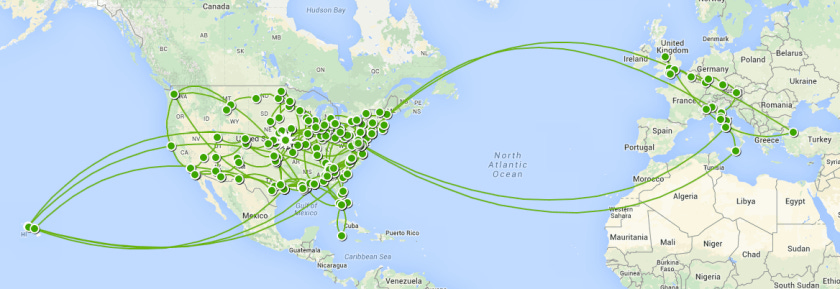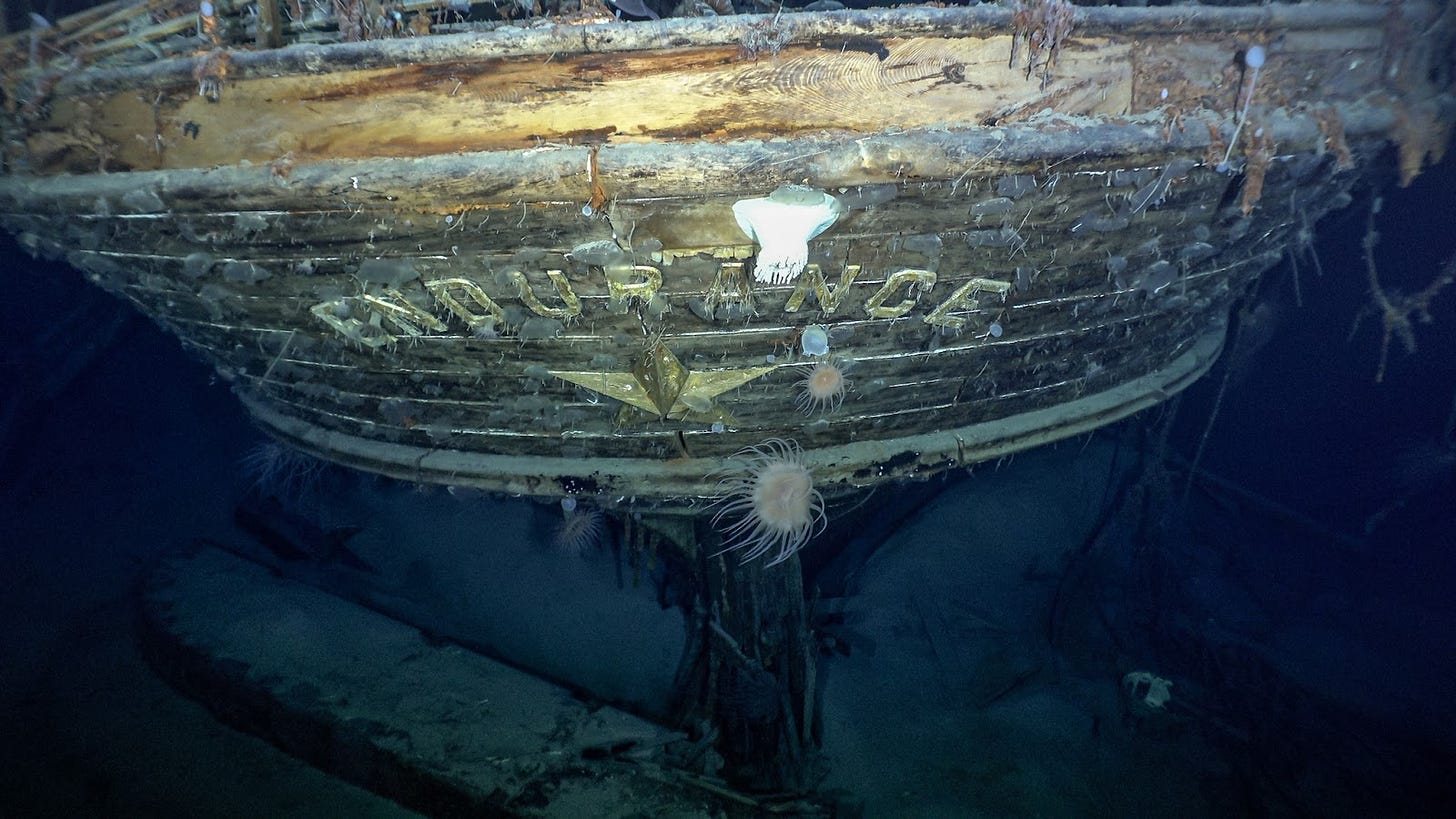
Concern in Brooklyn, Panakhyda in Washington, and Endurance in the Arctic
The Friday Pillar Post
Happy Friday friends,
I’m sure you are all, with one or two notable exceptions (you know who you are), as utterly unenthusiastic about MLB’s reported deal with the players’ union as I am.
We’ve lost Opening Day, and it looks like the first two weeks of the season. But I’m glad they’ve settled their differences over the luxury tax and payroll — and I mean that.
But what are the fans getting? The universal designated hitter rule, a ban on the shift, endless made-for-TV playoffs, and now bigger bases? Are you kidding me? The league is obsessed with “more offense” and shorter games — priorities which are as obviously contradictory as they are sordid.
This isn’t the game I love coming back. It’s the slow motion conversion of baseball into a kind of funhouse distortion of itself. It’s like seeing a drag act tribute to someone you love.
I’m not giving MLB a penny this year, or probably ever again. Not one. Not for TV, or tickets, or anything else.
I’m also a shameless hypocrite, and have already agreed to join a friend for the Cubs’ visit to Camden Yards in June.
Anyway, on with the news.
Concerning Brooklyn
There was an unexpected turn to what looked like a fairly ordinary story this week: On Monday, the Vatican announced the resignation of Brooklyn auxiliary Bishop Raymond Chappetto, ostensibly as a matter of age.
At the time, it seemed like a perfectly unremarkable thing: Chappetto is 76.*
But on Wednesday we reported that there is more to the story.
Chappetto — who had served as the diocese’s vicar general — is the subject of a Vaticaninvestigation under the norms of Vos estis lux mundi.
In September 2020 Chappetto received a memo about a priest who was temporarily out of ministry because of an instance of misconduct, and participating in a treatment program.
The memo, from a pastor who had served with the priest, warned that he had exhibited a pattern of persistently problematic behavior — red flags which suggested the priest should never be permitted to be returned to a parish setting. Chapetto did not forward that memo to the diocesan review board or to other diocesan officials, we were told.
Lacking that information, the review board recommended the accused priest be assigned to another parish, only to be removed again, after another allegation of serious misconduct.
“Bishop Chappetto was not sharing important information in the diocese. And this was a pattern,” one the source in the diocese told us. “It was definitely a pattern, he was trying to protect people.”
That is… a concerning allegation.
A few days before Chappetto’s resignation was announced, the diocesan vice chancellor and director of the Office for Protection of Children and Young People, Jasmine Salazar, resigned. It was Salezar who filed the Vos estis complaint against Chappetto in November last year.
A source close to the diocesan review board told us that after incoming Brooklyn Bishop Robert Brennan opted to keep Chappetto in place as vicar general in December, despite being made aware of the complaint, “Jasmine wrote a very, very strong letter of complaint.”
“But after that,” they told us, “she was frozen out at work — she stopped getting invited to meetings, her email was turned off. It was like the bishop didn’t want to hear that Chappetto needed to be out.”
That is also a concerning narrative, meriting further investigation.
Vos estis, by the way, has whistleblower protections which state that “prejudice, retaliation or discrimination as a consequence of having submitted a report is prohibited” and may be charged as obstruction of justice in canon law.
We don’t know for sure what happened in this particular case — that is what an investigation is for. But had people in the diocese not talked with us, and allowed the Vos estis complaint to be reported, in all likelihood neither the complaint, the investigation, nor its eventual findings would ever have been made public.
Given what we know about the whistleblower’s resignation, it’s hard to see how that could credibly have led to lessons being learned, let alone individuals being held responsible for their actions.
This is not, by the way, how the same situation would have been handled had it concerned a priest in virtually any diocese in the U.S. — the priest would have been removed from all ministry, publicly and immediately. He’d probably also have found himself on a public list of accused malefactors, and anyone with information about similar possible misdeeds would be encouraged to come forward.
Once again: any reasonable person should find this concerning.
Yet, in the Vatican, and by extension among bishops delegated by them to handle Vos estis investigations, the default remains that complaints made against bishops are of a different kind, deserve a different level of discretion, and should be publicly unacknowledged and resolved, whenever possible, behind closed doors.
This is not the transparency that was promised at the landmark Vatican summit in 2019, nor at the USCCB’s 2018 meeting in the wake of the McCarrick scandal. But that doesn’t seem to concern many of our bishops at all.
—
One bishop who definitely did not resign this week was Bishop Daniel Fernández Torres of the Diocese of Arecibo in Puerto Rico. Pope Francis instead took the highly unusual decision to sack him, “relieving him of the pastoral care of the diocese” on Wednesday.
According to Torres himself, he seems to have been canned for disagreeing with his brother bishops over vaccine mandates and choice of seminary. If that’s the reason, it is, in the wider context of global episcopal problem behavior, a remarkable red line for the pope to have drawn.
But can the pope just fire a diocesan bishop without a trial, or a process, or seemingly even cause?
Well, we put together an explainer on that for you.
—
Of course, much of the news this week has remained focused on the continued crisis in Ukraine.
Major Archbishop Sviatoslav Shevchuk, head of the Ukrainian Greek Catholic Church, called on Ukrainian Catholics around the world to pray the Panakhyda, the Ukrainian Church’s memorial for the dead, yesterday.
Archbishop Boris Gudziak, who heads the Ukrainian Greek Catholic Church’s Archeparchy of Philadelphia, led the liturgy at the Shrine of the Holy Family here in Washington last night, offering prayers for “those who have lost their lives as a new genocide is being enacted upon the innocent people of Ukraine once again by the government of Russia.”
The Pillar was there too. You can read about the liturgy here.
—
—
The religious implications of the Ukraine crisis are deep, and very, very real — both for that country, and for Russia.
Of crucial importance is the role of the Russian Orthodox Church’s Moscow Patriarch Kirill, who has increasingly appeared to provide a kind of religious rationale for the invasion, and the shifting positions of Ukraine’s Orthodox communities.
They all seemed to agree that, far from solidifying what Kirill has called the “single space” of Russian and Ukrainian Orthodoxy, Moscow’s political and religious leaders look to have opened up a permanent breach between the Ukrainian and Russian Churches.
Now, you can try to understand what is happening between Russia and Ukraine without understanding the religious context, and specifically the dynamics of the various Orthodox Churches. But it would be a lot like trying to map the situation in the Arab world without knowing what a Sunni or a Shi’ite is.
—
Back to Russia, religion, and politics, JD mentioned on Tuesday the most recent, lengthy, (some might say rambling and unhinged) missive from the former nuncio to the United States, Archbishop Carlo Maria Vigano.
Vigano has endorsed Putin’s vision of the Russkiy-mir, and explicitly recognized Moscow as the legitimate heir to Rome and Constantinople as the standard bearer for “Christian civilization” in both Church and state.
It is tempting to dismiss Vigano as a crank, at this point. But the reality is that he is a fairly influential crank:
He was a highly visible figure for the Trump campaign during the last election, and appeared by video at several “stop the steal” rallies prior to inauguration day. He’s also been a touchstone for many media voices on the fringes of American Catholicism, especially among the kind of YouTube polemicists and quasi-political “activists” with a fondness for “stopping the steal” and praising the “Christian values” of Putin’s Russia — which has one of the highest abortion rates in the world, by the way — while fantasizing about an authoritarian Christian integralist state.
Vigano’s unambiguous Russophilia in the midst of the shelling of civilian population centers may, one imagines, prove to be a line in the sand for his American fans. Certainly, they may ask themselves what, if anything, can be deduced from quite so many of their fellow-travelers coming down on the side of political violence.
You can read my analysis here.
—
Every Friday, our own Charlie Camosy has a conversation with an interesting person. I’ve found them, by turns, educational, affecting, and unexpected. I look forward to them every week when they come in.
But I don’t think I’ve yet read an opening like this:
“Ten years ago, Meg Hunter-Kilmer decided that God wanted her to move into her car and hit the road, as an itinerant missionary preaching Jesus Christ.”
That is some no-kidding, old school, Christian discipleship.
Her travels have taken her to 50 states and 25 countries, announcing the Gospel through talking about the lives of the saints. It looks like a wild ride.
—
—
I had something of an interesting conversation myself this week. As serial readers of this newsletter know, we have been following the saga of the Sovereign Military Order of Malta for some time, as the knights have worked to produce a new constitution for their order.
The cardinal has been the driving force behind proposals for reform, some of which have been criticized for putting the order’s sovereign international status in jeopardy. He answered that criticism fairly directly:
“The religious essence of the order must pervade the whole life of the order, so its religious essence and its governance are a ‘whole,’ and it is not possible to intervene on one front, without intervening on the other one.
But the intervention by the Holy See on this ‘whole’ can only reinforce the sovereignty of the order, because the international [legal] dimension of the order is linked precisely to its charism and its charitable and humanitarian works.”
We also talked about the first class knights, the Fras, who make religious vows of poverty, chastity, and obedience.
The extent to which the Fras should have either a scaled back or scaled up role in leading the order’s diplomatic and humanitarian affairs has been a flashpoint among the knights themselves — certainly among those I have spoken to over the last few months.
But, Cardinal Tomasi told me, that argument is over.
“I would like to make it clear that there is no debate about the role of the professed within the Order of Malta,” he said. “Everyone agrees that they have the leadership because the order is a religious order.”
If that’s where things are after their first meeting with the pope, that’s real progress indeed.
—
Real endurance
For anyone who missed it, by far the best piece of news this week was that divers have located the wreck of Endurance, Sir Ernest Shackleton’s ship. This is a huge deal.
If you are not familiar with the fate of Endurance and the Imperial Trans-Arctic Expedition of 1914, I don’t think it’s an exaggeration to call it the kind of heroic failure which makes Apollo 13 look like a flat tire on the Jersey turnpike.
Like Apollo 13, Endurance never made it to its proposed destination. Shackleton aimed to lead the first crossing of the Antarctic continent. Instead, after sailing out of South Georgia, the ship became trapped in the sea ice for months, slowly crushed from all sides, as the men camped on the ice next to her.
When the spring thaw came, and the water poured into Endurance, Shackleton and his men hopped from ice floe to ice floe for two more months, praying that they would drift as close as possible to land.

With the ground literally melting beneath them, they eventually took to their three lifeboats, landing five days later on Elephant Island — some 350 miles from where their ship sank.
I’m not sure if it’s possible to describe what a five-day open-boat trip in the South Atlantic is like, but let’s go with “frozen, salted, hell.” When they reached the island, which is basically a just-calcified pile of penguin shit in the worst part of the roughest seas in the world, they still needed to come up with a rescue plan before they starved to death.
That plan was Shackleton and five others taking one of the lifeboats and sailing it 720 nautical miles back to South Georgia, which they somehow reached, only to run smack into an actual hurricane when they were in sight of land.
The storm deposited them on the wrong side of the island — a long way from any help. So, Shacklton and two of the others hiked over the mountains running across the island, shoving nails through their boots to help make it up the cliff faces. Those mountains were not successfully crossed again for another forty years — and more than a few people tried.
Shackleton sailed out of South Georgia on Dec. 5, 1914. On May 20, 1916, he walked back into port to arrange rescue for the remaining crew on Elephant Island. He didn’t lose a single man the whole trip.
That’s endurance.
See you next week,
Ed. Condon
Editor
The Pillar
* When this newsletter went out, I incorrectly said the Diocese of Brooklyn had recently received two new auxiliaries. That was an error by me — those new appointments were over the bridge in the Archdiocese of New York. My apologies.










Politics makes your head spin. VP Harris has taken a crash course in NEWSPEAK in order to sound engaged in Eastern Europe. DNC handler: Madam VP, you will say that national integrity and recognition of national boarders is bedrock to international peace and security. VP Harris: Yes, yes, I know. We are against boarders and for the free movement of peoples not hampered by racist lines drawn on a map by the privileged white minority! DNC handler: er, no Madam VP, we are for them now. We are not talking about the evil USA, we are talking about Ukraine. VP Harris: Wait a minute, you said we were in Poland. DNC handler: That is correct Madam VP. VP Harris: Aren't they the same? The people sound the same. DNC handler: Madam VP, they are different countries. VP Harris: More evidence of nationalist crimes against free people. DNC handler: Of course Madam VP, but right now, we are for them. Please read these sound bites as written. VP Harris: Ok but you better not make we look foolish. DNC handler: That would be quite impossible Madam VP.
Ed, I'm with you on the rules changes, and am in mourning over the universal DH. But where else can we go for baseball? Yes, there are the minors, but they have the DH, don't they? I feel like I need a Pillar Explainer on the minor leagues, but I've been to quite a few A and AA games and they're always a lot of fun.